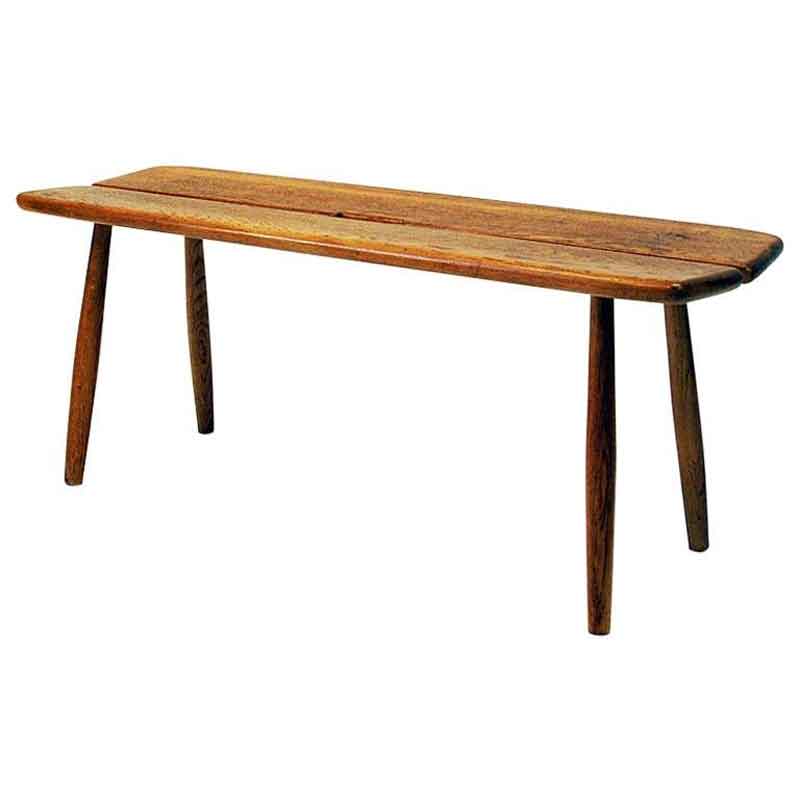Dear Koen, Stoclet Palace...
Dear Koen,
Stoclet Palace is protected as well as its content from which it cannot be separated. But part of Stoclet's family took legal action against this decision. The building seems in general worrying condition and many objects and furniture have already been scattered or need important restoration. Let's hope that when the case will be legally judged, Belgian authorities will take the necessary steps for the preservations of this exceptional patrimony and will make it accessible to the public.
More information on the link below (in French)
http://www.lalibre.be/culture/politique/article/518493/la-saga-du-palais...
Robert, I rediscovered the...
Robert, I rediscovered the name I couldn't remember
Lilly Reich, know as Mies collaborator and assistant but often times looked over and left in the shadows.
While roaming the north shore of Chicago like a some kind of feral modernist, I waltzed into a convenient library. by chance, came across Hans Wingler "Bauhuas" book. Flipped through and immediately recognized her short bio. Here's a short excerpt:
" Connected with Josef Hoffman and the Wiener Werkstatte and at all times maintained contact with the German Werbund.
Also found a very nice book on the WW
"Wiener Werkstatte: Design In Vienna by Christian Brandstatter (Brandstaffer?)
Here's a important quote by Oskar Kokoschka to consider. Pg 9 of the WW book which is an excerpt from a 1963 interview: "In a certain sense [the Wiener Werkstatte] , by bringing together all forms of art, anticipated the ideals of the Bauhaus for Vienna".
Sooooooo...Taken these things into account, my original post was indeed valid?
There's so much and very...
There's so much and very little info it's hard to sort things out. What's interesting about the Kokoschka quote is that it's the only mention of the Bauhaus in the whole book (according to the index). As a whole, I would say the jury is still out as to how much influence either had on each other. I'm sure someone knows!
I am not sure
that Robert's remarks are aimed at me, but in case you are Robert, I have to agree that even with the proverbial 20/20 hind sight, there are countless interpretations for every historical event. As for more trivial questions like this one there must be many more. Lilly Reich, the so often overlooked genius actually worked for Joseph Hoffmann in Vienna from, 1909 on. But one has to consider that she left when she was 26 years old. I guess that 3 years would be enough to pick up some of Hoffmann's fundamental ideas, but she has proven many times over not to be just a sponge. She also joint the teaching staff at the Bauhaus, but if I remember well, not before L.Mies van der Rohe became director. So let's say earliest 1930, but most likely a year or two later. Which is 3,2 or one year before the Bauhaus was closed. I do not think that that period was very influential as far as the fundamental principle of the school was concerned Of course she was director of the Werkbund for a while and after the war she worked herself into the grave to resuscitate the organization. Although the two words have the word: Werk in common. The W.Werkstätte was a large workshop with close to 100 artisans of all kinds working in it. The werkbund was a large national organization of architects, designers and manufacturers of furniture, cutlery etc. Although I am still open to be convinced by other arguments, I am still in the corner of those who interpret their history as a parallel aesthetic evolution with some common but mostly different goals. The common ones were hardly new for neither of these two institutions. The idea of the Gesamtkunstwerk came from the previous century and most of the social goals had been formulated earlier to. Some differences are of course, simply the result of the difference between an educational system and institution (the Bauhaus) and a production shop (the Wiener Werkstätte). But I still see a very fundamental difference in the Arts and crafts type of rejection of the industrial area (W.W.) and the goals of the Bauhaus, to provide the industrial revolution with it's own form language. As for Oskar Kokoschka-He was a very good expressionist painter and a passionate rival of Gropius for Alma Mahler's love, but not a very objective observer of what Gropius and the Bauhaus were trying to achieve.
I guess Robert ...
That we have provided the initiator of the thread with more than enough material. Eventually, I think we have to come to the conclusion that all these institutions that worked either in education (the Bauhaus), in architecture and design promotion (the Deutsche Werkbund) or in production (the Wiener Werkstätte) toward similar goals, could not ignore each other. Communication was not what it is now, and both the end of the Austrian Hungarian Empire and the first world war certainly left deep scars into many parts of Europe, and yet, similar and complementary ideas florished and made, the rejection of the cultural consequences of the industrial revolution as formulated by Wiliam Morris, evolve toward a more integrated vision in which cultural values could be preserved in a more humane industrialized society. This broader cultural movement was obviously a rather small community. Otherwise how could Alma Mahler toward the end of her life have said: The history of modern music, architecture, design, painting and literature can not be written without mentioning one of my former husbands or lovers.
Tangent
MoMA Bauhaus exhibit review at link below:
http://www.newcriterion.com/articles.cfm/The-Bauhaus-restored-4332
It's an interesting contribution...
...and finally someone is saying publicly that the reason for the closure of the Bauhaus was not as much the pressure from the political regime as the internal problems of the school...we finally get some historical perspective.
It is also interesting to read about Gropius' change of opinion on the need for collaboration with industry and the outside world in general. In the early years he had of course been reminded a number of times by the Weimar authorities that they did not want a repeat of the Van De Velde Kunstgewerbeshule Weimar system, where, as a result of very vague borders between the school's workshop and Van De Velde's, his income from products made by the school was more than four times as high as his income as a director of the school...according to Van De Velde's own records. The Weimar authorities did not want to see a repeat so Gropius was warned. On the other hand he knew very well how important it was for the visibility of the school to have some production and collaboration with the industry. When waiting in England for his departure to the U.S. he wrote extensively to Breuer to join him. To a large extend it was for Marcel Breuer's own interest, but he can not completely hide in the letters that he needs the kind of hands on, highly productive fellow Breuer was, in order to be himself successful in any future endeavors...I hope I can make it to New York's MoMA before the end of January...
I just can't let go....
As some of the previous contributors pointed out there is of course a relation in the form language of Bauhaus and the Wiener Werkstätte a relationship that can not be explained simply by reminding people that they both had their roots in the arts and crafts movement...and than I remembered that that dear Charles Renny Mackintosh, the great Scottish architect visited Joseph Hoffmann. I am too short of time to look it up before the week-end but the visit was extensive, the admiration mutual and they kept in touch by letters afterwards. Mackintosh is probably the first one to start these very pure lines in both architecture and furniture. The repetition of squares also started in his work and was repeated in Hoffmann's so there might be something there that we overlooked.
I remember this long and interesting exchange...
...very well, but I am not sure we can do it on the somewhat tragic story of Charles Rennie Mackintosh. If there is any interest in it I will gladly participate. Otherwise I am just going to wish you a very pleasant and healthy year.
CRM and the Bauhaus
I'm currently doing a dissertation "Did Charles Rennie Mackintosh influence the Bauhaus" I find this thread very interesting but with all my research, I've found very little evidences and wonder am I being skeptical of the Bauhaus not acknowledging any influence because they wanted try and imply their work was all original - what do you's think?
If you need any help, please contact us at – info@designaddict.com










